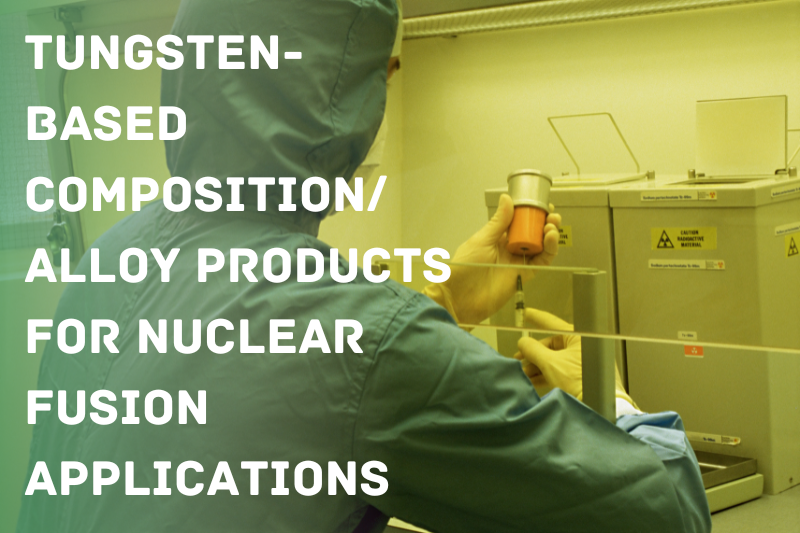
- Oct 20, 2022
- Agescan International
- Tungsten
- 0 Comments
Tungsten alloy is an ideal material that is useful in modern nuclear applications because of its ultra-high density. Tungsten radiation shielding in light of serious areas of strength for its X-Ray and Gamma-Ray retention limit. It is the up-and-coming age of radiation protection material. Contrasting with the traditional safeguarding material, lead, it effectively accomplishes a similar degree of protection with a much smaller design.
Tungsten-based Composition Alloy Products for Nuclear Fusion Applications
Tungsten alloy could likewise be useful to produce the Coolant Pump Thrust Runner, Flywheel, Control Rod or fission reactor, because of its ultra-high density and low responsiveness. These are the basic security parts to guarantee the principal pump system’s appropriate capability when experiencing overheating and abrupt fizzle.
Because of broad exploration, Tungsten (W) has arisen as an exceptionally valuable plasma-facing material (PFM). Properties which make it a likely possibility for fusion applications.
- The high liquefying point,
- High warm conductivity,
- Low coefficient of thermal development,
- High faltering edge energy,
- Low tritium maintenance and
- Low neutron activation
Already, applications of Tungsten were uncommon and restricted to exploratory purposes just in tokamaks because of the formation of high-Z dust, which begins from materials disintegrating on the surfaces of the plasma-facing parts.
Tungsten-based composites alloy
The research focusing on consolidating W with enhanced high-temperature properties and irradiation obstruction through composite materials is complex. Different kinds of W-based composites for tungsten nuclear shielding, including dispersion-strengthened, particle-reinforced, fibre-supported, and laminated composites are available and explored through research.
1. Oxide dispersion strengthened composites
ODS W composites have gotten the attention of analysts because of their superior high-temperature mechanical properties. Extensive research work is underway to foster ODS-W composites with streamlined high-temperature and plasma-facing properties.
A significant part of the Research and development work to realize ODS W composites is to investigate materials which might keep a reasonable microstructure after irradiation without grain development or recrystallization.
2. Ceramic particle-reinforced composites
Because of its high dissolving point and tantamount mechanical and heat properties with W, ZrCis likewise a dopant of interest in the work to foster a W-based composite having great high-temperature properties.
In the quest for a reasonable W-based composite for tungsten alloy radiation shields, 35vol%ZrC/W was produced by response sintering through the warming ZrO2 and WC together up to a temperature of 2100°C with an ensuing assessment of physical and mechanical properties to ensure the achievement of proper tungsten alloy products for shielding.
3. Fiber or whisker-reinforced composites
By frictional sliding and debonding of the fibre/network interface, fibres control breaking and improve the heap-bearing limit of composite materials for tungsten alloy products.
The tungsten strands can endure a fusion environment until they lose their sturdiness and become fragile. The adequacy of Wf with regard to the properties of Wf/W composites relies on the volume part of the fibres.
The middle-of-the-road break energy of the Wf/W point of interaction is expected to acquire the most extreme toughness in fibre-reinforced composites for tungsten nuclear shielding.
4. Laminated or 3D composites
Laminated W composites consisting of numerous layers of W foils can be useful as an underlying material. They demonstrate a malleable way of behaving in light of the fact that W foils are pliable at room temperature.
The behavior of a W-foil overlaid composite under a mechanical burden uncovered that this material has the possibility to serve in fusion reactors as primary material W overlays, which were delivered by collecting a few layers of W thwarts together.
When subjected to Charpy impact test, they consumed 2 J, 5 J and 10 J of energy at room temperature, at 100 °C, and at 300°C, separately.
Conclusion
The properties and features of W-based composites need to be understood. It will comprehend the possibility of W-based composites for nuclear fusion applications and manufacturing processes.
That is the point at which the absolute comprehension of the composites can be created. Get in touch with Agescan International Inc. to inquire about Tungsten-based Composition and Tungsten Alloy Products. Get in touch with Agescan International Inc. for the Tungsten composition and Tungsten alloy products we provide.
